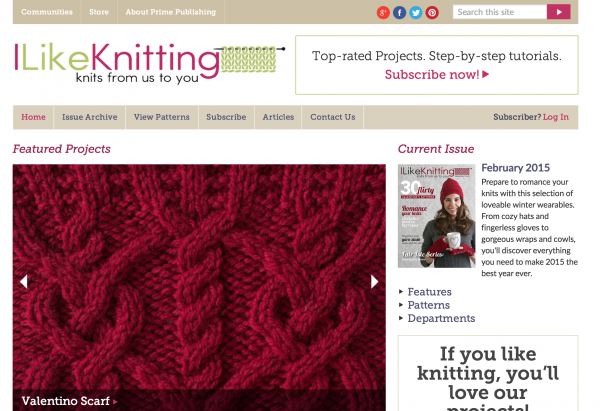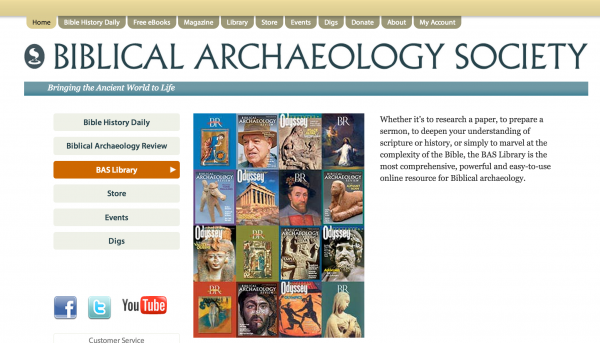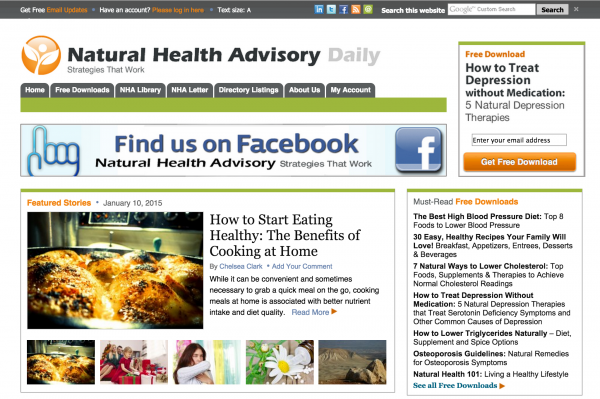Knowing how to build a website isn’t just about design, it’s about the business models behind every tab
If you’ve read Mequoda Daily before (I hope you have!) then you know we frequently speak about subscription website business models. Most people see these business models as different tabs on their websites, but we make distinct separations between them.
For example, if you look at Natural Health Advisory, the “Home” and “Free Newsletters” tabs are part of a Portal website business model because they exist to distribute free content in order to attract website traffic. The NHA Library and NHA Letter tabs are part of a Newsletter subscription website business model, which is a premium model meant to drive revenue. Free and paid models like this, should always go together.
Portals are intended to build and feed an audience; they are specially designed for SEO, email marketing, list building, and lead generation. They serve free content in exchange for email addresses that later promote their premium products, like a newsletter subscription website.
A newsletter subscription website archetype is set up to build subscriptions for a related print or digital newsletter and to provide access to issues of the newsletter. A newsletter subscription website is commerce-based, with an overall objective of increasing product sales and providing customer service to existing subscribers. The Minimum Information Unit (MIU) is an article, and the primary product sold through the website is a single issue of the newsletter. The website is organized by the newsletter’s issue date.
Remonsy, Nutrition Action and Golf Odyssey are all examples of Portal and Newsletter combinations that pair beautifully.
[text_ad]
There are other popular combos too. I Like Knitting is a great example of a Portal and Magazine subscription website.

You already know what a portal is, but a magazine subscription website comes with a different set of rules.
A magazine subscription website model is set up to sell subscriptions for a related print or digital magazine and to provide access to issues of the magazine. A magazine website is only a magazine website if the user can view or download an issue of a magazine—one that is linear and periodic, has pages and a regular frequency, and can be viewed in HTML or downloaded as a PDF or stored in a CDF (Closed Document Format) format such as Texterity’s Cover Leaf. The MIU of the magazine subscription website is an article, and the website is organized by issue.
I Like Crochet and Bayou City are both Portal/Magazine combos.
[text_ad]
Another great combo example is Biblical Archaeology Society, who run Portal, Magazine and Reference subscription websites.

In addition to the Portal and Magazine websites which you’re already familiar with, BAS offers a comprehensive Reference subscription website that’s a repository of three different magazine archives, videos images and bonus subscriber benefits. It’s practically a Magazine subscription website, except it offers so much more than the magazine so it’s technically a reference website.
A reference subscription website model allows paid subscribers continued access to a library of content that is constantly updated with new information. Reference subscription websites are the online replacement for printed reference books, print directories, catalogues, and loose-leaf binders that used to be updated quarterly or annually. For a reference subscription website, however, the flow of new and updated information is constant. The paid subscriber can search or browse through the library of data to access the information or listings and find answers to questions. Reference sites for consumers can cost as little as $20-$30. For B2B reference sites, the subscription can cost
The paid subscriber can search or browse through the library of data to access the information or listings and find answers to questions. Reference sites for consumers can cost as little as $20-$30. For BAS, it’s $29.95 per year. For B2B reference sites, the subscription can cost hundreds or thousands of dollars.
The MIU of a reference subscription website may be an article or a book, report, document, lesson, or episode. It could be something as small as a baseball card factoid or as comprehensive as a training video. While simple sites may rely solely on HTML and PDF files, more robust sites also incorporate still photos, audio, and video into the MIU.
Do you begin to see how all of these business models mix and mingle? Every premium subscription website business model should have a Portal to promote it. Otherwise, you’ll rely on paid advertising forever when you could get traffic and revenue for free through SEO on a Portal.
Do you know which business models mix and mingle on your website? If you’re not sure, ask, and I’ll let you know!



